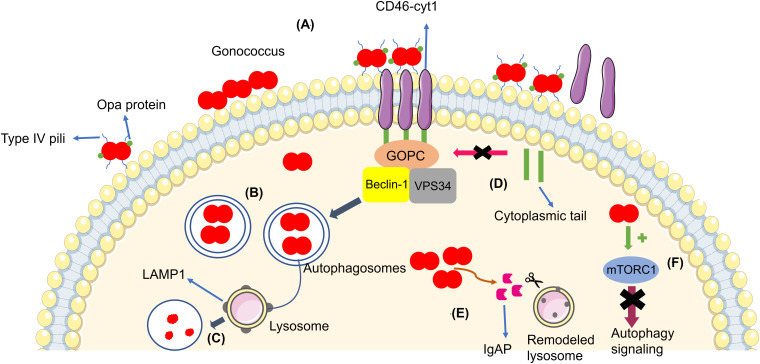FIGURE 1.
(A) Gonococci (in red) adhere to the cellular membrane and form a microcolony, triggering the autophagy pathway through CD46-cyt1/GOPC, which recruits the Beclin-1/Vps34 complex. (B) Bacteria become enveloped in the autophagosome (blue arrow). (C) The autophagosome fuses with the lysosome in order to kill the bacteria. (D) Gonococci evade the autophagy pathway by inducing the cleavage of the CD46-cyt ectodomain via metalloproteinases and by inducing the cleavage and release of the cytoplasmic tail via presenilin/y-secretase, decreasing intracellular CD46-cyt1 and the cell’s ability to initiate autophagy (pink arrow). (E) Bacteria secrete IgAP, (orange arrow) which cleaves LAMP1, resulting in remodeling of the lysosomal membranes and prevention of autophagosome/lysosome fusion, therefore increasing the survival of the gonococci. (F) Gonococci activate mTORC1 (green arrow), therefore suppressing autophagy signaling (purple arrow).

